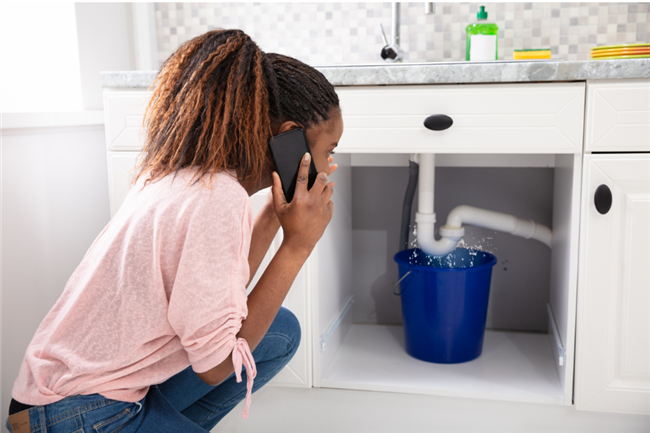Plumbing has always been a concern to families as it needs careful attention and constant repair and maintenance.
Remember that if you don’t get a professional plumbing team to check your system regularly, you’ll face emergency issues.
In Toronto, you can call R and Z Plumbing if you see any plumbing emergencies. You can also find many things by yourself. Here are some tips in case you face plumbing emergencies.
Turn off the water supply
In the event of a plumbing emergency, the first thing you should do is turn off the water supply at home. Turn the valve to the right under the sink in the kitchen or the bathroom. If the flooding is severe, turn off the main water supply to the house.
Make sure you know where the primary shutdown valve is located. The primary valve is usually located outside your home garage; however, this is not always the case. The handle is generally painted in bright colors to make it easier to find. Shutting off the main supply as soon as feasible is a good idea.
Avoid chemicals
A blocked drain is an inconvenient plumbing emergency in which you might need to call a plumbing team. Using chemicals to clear the clogging will make it worse. A plunger can help you initially to remove the obstruction. If that will not work, try to pour hot water down the drain. Sprinkle a cup of baking soda and hot water all over again. This will work to an extent. In the meantime, you can call a plumber to handle the blockage properly.
Turn off your heater
If you face a plumbing emergency, you should also turn off your water heater. It will prevent energy accumulation from causing harm to the water heater. During a major plumbing event, it may overheat or burst. Make sure you know how to turn it off. Turn off the gas supply if it’s a gas water heater. Do it as soon as possible before turning off the heating.

Find and fix the leakage
In case of a plumbing emergency, try looking for a leaky tap at home. In most homes, there is a leaky tap. To repair the leak, you’ll need the following plumbing tools. After shutting off the main supply, run the leaky tap to eliminate any leftover water. It’s conceivable that simply changing the washer will solve the problem; however, replacing the faucet is also preferred.
Change broken pipes
A pipe burst at home is an unanticipated occurrence. But what should you do if it does happen? To prevent flooding, place a container underneath the ruptured pipe. Turn off the main supply at home right away. To halt the flow of water, turn the water valves in the opposite direction of the flow.
With your thumb, try to keep the pipe as tight as possible. To install them into the drainage system, you’ll need a rubber stopper and a screw clamp. Wrap a hefty fabric and many layers of cling film around the leaking site. You may now contact a plumber to permanently resolve the issue.
Keep your plunger close
Plungers are essential home tools that will save you a lot of money over time. Plungers are readily accessible and reasonably priced. Placing the plunger on the drain will seal the drainage. This allows even the tiniest barrier to melt and the water to flow freely again.
Pay special attention to your toilet
An overflowing toilet is one of the most common plumbing issues in the house. There might be various reasons for this, including an obstruction, a clogged drainpipe, or a crowded residence. Locate the shutdown valve in the event of a toilet emergency. It’s commonly found towards the bottom of the toilet, on the side, or against the back wall. To avoid a flood, turn off the valve right away.
While it’s possible to fix some plumbing jobs on your own, other jobs require the help of a professional. So, if you need help with a severe plumbing problem, contact a licensed plumber in Oklahoma. There are plenty of emergency plumbers in Tulsa who can help you with any job
Consider the problem of frozen pipes in winter
A water pipe (or a bulge) or a tap that has frost/ice on it may be frozen. Because not all pipes are visible, if there’s no water or only a little trickle coming out of the tap and your toilets won’t refill after a flush, you may have a frozen pipe.
The failure of the heating system might be caused to frozen pipes.
If your vacation cottage’s pipes freeze despite your best efforts to keep them from freezing, here’s what you should do to avoid a burst. If in doubt, get advice from a licensed plumbing and heating engineer.
Here is how to fix frozen pipes:
- Don’t be worried; frozen pipes don’t always explode.
- To restrict the quantity of water that may escape in the case of a rupture, turn off the water supply via the internal stop tap.
- Turn off the stopcock on your cold-water tank (which is normally situated in the loft).
- Turn off the heat source (central heating or immersion heater).
- Examine pipes for cracks, bulges, and traces of freezing. Because frozen water seals cracks in pipes and plumbing joints, they may go undetected. If your pipes have split, get a plumber to fix the problem.
- Open the taps closest to the frozen pipe so that the water flow will relieve pressure when the frozen water thaws.
- Turn on the water supply once your pipes have thawed and you’re sure there are no leaks.
- Check for evidence of leakage and then switch on the central heating system.
- Take the actions outlined above to avoid future frozen pipes.





